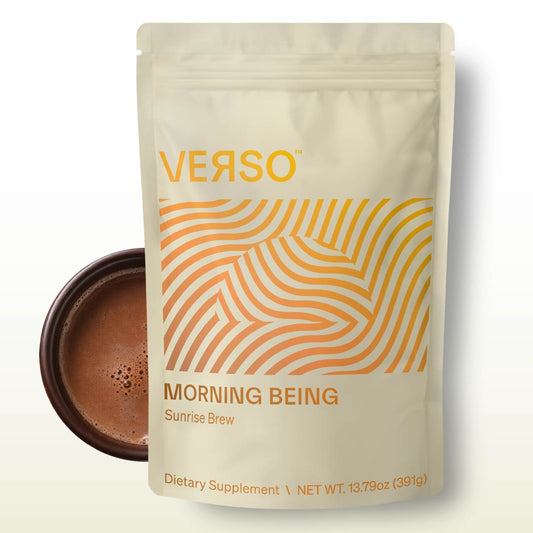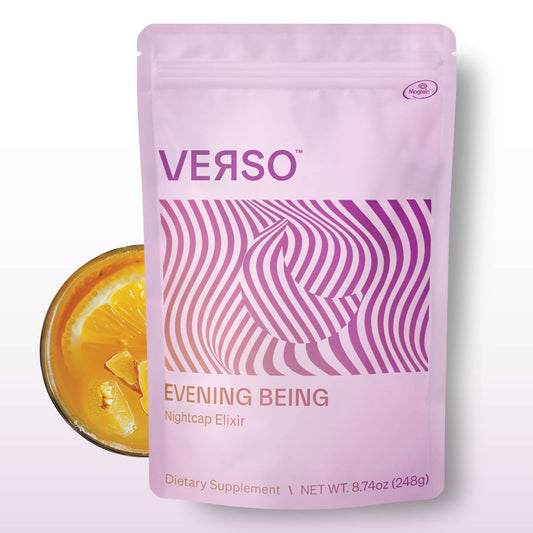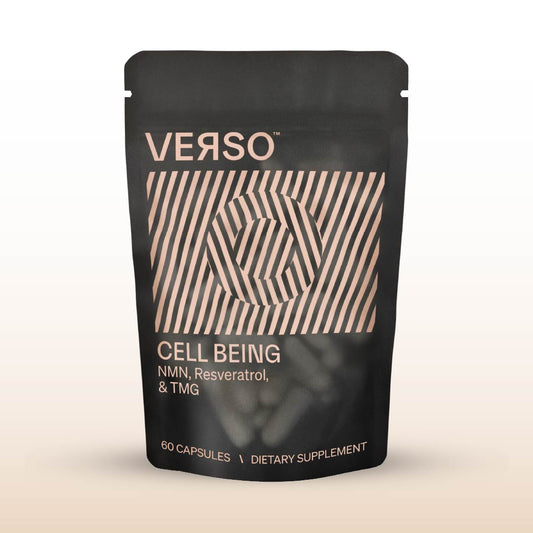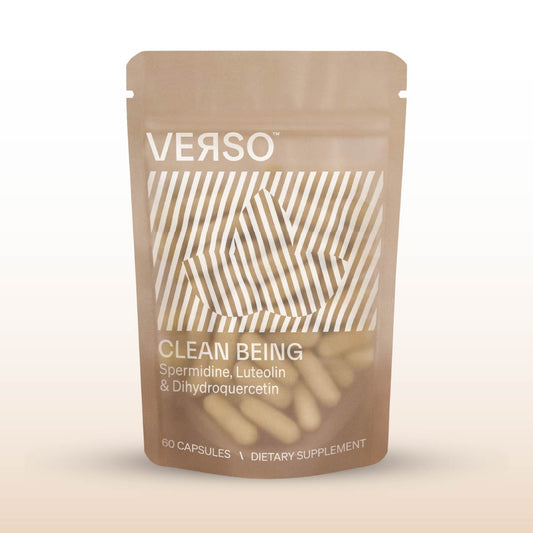Exercise is one of the most powerful interventions to counteract age-related loss of function, resulting in improved cardiovascular, neurological, metabolic and physiological health.
Here is Your Guide to Exercise Mimetics: NMN as an Exercise Mimetic
EXERCISE AND LONGEVITY
Exercise is one of the most powerful interventions to counteract age-related loss of function, resulting in improved cardiovascular, neurological, metabolic and physiological health. Exercise reduces the risk for heart disease, metabolic issues such as obesity, cognitive decline and certain cancers. It also helps with weight management, and to strengthen bones and muscles(Warburton). People who regularly exercise have been shown to have better cardiovascular, metabolic and respiratory health, as well as to have a lower overall mortality risk when compared to sedentary groups(1, 17).
WHAT IS AN EXERCISE MIMETIC?
The loosely defined term ‘exercise mimetic’ tends to refer to tools, lifestyle or pharmacological, that provide a similar complexity of benefits to exercise(2). Most of the benefits of proposed exercise mimetics have been found in the preclinical animal model setting. Additionally, most researchers frown on the idea that exercise could be replaced by another modality, but recognize that other modalities could replicate some of the beneficial effects of exercise.
HOW ARE EXERCISE MIMETICS PROPOSED TO WORK?
Exercise is a moderate biological stress that works by shifting energy, stress resistance, and nutrient-sensing pathways(14, 23). Exercise causes oxidative muscle remodeling which occurs due to modulating genes involved in fatty acid oxidation, free radical scavenging, mitochondrial biogenesis, fatty acid oxidation and downregulating glycolytic genes, which can lead to lowered blood sugar levels, reduced inflammation and enhanced endurance(6). Exercise mimetics are proposed to work in a variety of ways. Since skeletal muscle is the most responsive organ to exercise, focus mechanisms include pathways involved in muscle energy metabolism and remodeling: AMPK, heat shock protein 72, GLUT4, PGC-1a, protein kinase C-λ, MAPKs, and calcium signalling–all associated with our bodies beneficial response to exercise(8). Other focus mechanisms include those known to enhance endurance: PEPCK-C,SIRT1(activated with increased NAD+ levels), PPAR, and steroid receptor co-factor 3(8). Specific studies have suggested that an exercise-like associated manipulation of these pathways could confer similar benefits to exercise. (3,13,16,18). Proposed exercise mimetics include, but are not limited to: sauna usage, metformin, resveratrol, AICAR and GW501516, certain ligands, and recently, NMN (6,9).
HOW HAS NMN BEEN SHOWN TO PROVIDE SIMILAR BENEFITS TO EXERCISE?
Several mouse studies have shown that NMN can produce exercise-like benefits. Some researchers are focused on determining if NMN is an exercise mimetic by comparing the benefits of exercise versus NMN supplementation on obesity and other age-related factors such as: glucose tolerance, insulin sensitivity and tissue NAD+ levels(21-2). As we age, our NAD+ levels decline–physical exercise is one of the ways to increase NAD+ levels. When exercise increases NAD+ levels, AMPK and SIRT1 are activated(targets of exercise mimetics), which encourages muscle oxidative remodeling(12-3). Apart from exercising, supplementing with NMN, a precursor to NAD+, has also shown to be promising in increasing NAD+ levels. In addition to these metrics, a team of researchers at Harvard are working on using NMN to mimic the following improved cardiovascular effects of exercise: improved endurance, capillary health/blood flow, muscle oxygenation, and tissue oxygenation.
THE BENEFITS OF EXERCISE VERSUS NMN SUPPLEMENTATION ON OBESITY AND OTHER AGE-RELATED CONDITIONS
One study on obese female mice compared the effectiveness of NMN supplementation versus exercise on raising NAD+ levels. After either 17 days of NMN treatment or 6 days of 45 minute treadmill exercise for 6 weeks, the NMN treated mice underwent an increase in NAD+ levels in both muscle and liver, whereas the exercise intervention resulted in only increased NAD+ levels in muscle(21). Therefore, in this mouse model, NMN supplementation did not only mimic the exercise-related NAD+-boosting effects, but outperformed them. In a non-peer reviewed research study,12 weeks of 250 mg/day NMN supplementation increased NAD+ blood levels and improved muscle performance/strength in healthy older men (11).
In another mouse study, the effect of NMN in comparison to exercise on maternal obesity was tested. After either 15 days of NMN injection or 9 weeks of treadmill exercise, both interventions reduced fat weight, improved mitochondrial function, and improved glucose tolerance(22). In this study when compared to exercise, NMN was more effective on markers of liver fat breakdown. NMN supplementation and exercise in mice show similar effects on obesity-related glucose intolerance(21), suggesting the exercise mimicking effects of NMN supplementation in relation to improving markers associated with obesity. Another study showed that after 12 month administration of NMN, the NMN derailed weight gain associated with aging, improved insulin sensitivity, and enhanced physical activity and energy metabolism(15). Along the same lines, in a clinical trial NMN supplementation in prediabetic women increased insulin sensitivity (26). NMN was shown to upregulate genes involved in muscle remodeling, mimicking effects of exercise(26).
THE BENEFITS OF NMN SUPPLEMENTATION ON EXERCISE-RELATED CARDIOVASCULAR BENEFITS
As previously stated, exercise provides benefits for cardiovascular function; NMN supplementation has shown to be beneficial for cardiovascular function as well(20). For instance, over the span of 2 months researchers gave older mice (20 months old) an NMN treatment. When compared to young mice, after this treatment, the older mice had the same capillary density and number(5). Capillary health is an important adaptation to exercise for muscle oxygenation and energy metabolism(10). Capillary loss is implicated in human health decline(4). Additionally when compared to mice who did not undergo NMN treatment, the mice were able to experience enhanced endurance/exercise capacity by as much as 80%–running an average of 430 meters as opposed to 240 meters(5). Exercise capacity and blood vessel formation were also improved in regularly active young mice but not in young sedentary mice(5).
This evidence all supports NMN’s role as an exercise mimetic.
WHAT DOES THIS ALL MEAN?
While perhaps no exercise mimetic could mimic all of the complex effects of exercise, several pharmacological and lifestyle interventions have been proposed as exercise mimetics(7,19). From these so-called exercise mimetics, certain benefits of exercise could potentially be achieved by targeting exercise-related pathways, without engaging in physical activity. These pathways heavily rely on working within the gene network responsible for oxidative muscle remodeling including those involved in muscle energy metabolism and promoting endurance. Some of the benefits conferred from targeting these pathways include: increased NAD+ levels, lowered blood sugar levels, increased insulin sensitivity, strengthened muscles and bones(enhanced mitochondrial activity), improved endurance, blood flow, and muscle/tissue oxygenation. In the studies discussed above, NMN supplementation in mainly animal models as well as a few human trials, was able to show benefits on all of these parameters. Thus supporting NMN’s potential role as an ‘exercise mimetic’. A limiting variable to these exercise-like benefits is the different types of mouse models used, dosages used, and the studies’ timeframe of administration. More research is needed to further define the term ‘exercise mimetic’ and to determine the extent to which NMN exerts these exercise-like benefits(6).
Click here to read all about NAD+
Click here to read all about NMN
Click here to read all about AMPK
Click here to read all about Resveratrol
Click here to read all about sirtuins

Author: Jacqueline Seymour
Jacki is a Master’s student at USC, home of Dr. Valter Longo’s Longevity Institute, where she’s studying her passion for life: Gerontology(the science of aging) and Nutrition.
References
1. Blair SN et al. Influences of cardiorespiratory fitness and other precursors on cardiovascular disease and all-cause mortality in men and women. JAMA. 1996 Jul 17;276(3):205-10. PMID: 8667564.
2. Booth FW & Laye MJ (2009). Lack of adequate appreciation of physical exercise’s complexities can pre-empt appropriate design and interpretation in scientific discovery. J Physiol 587, 5527–5539.
3. Cantó C et al. The NAD(+) precursor nicotinamide riboside enhances oxidative metabolism and protects against high-fat diet-induced obesity. Cell Metab., 15 (2012), pp. 838-847
4. D.G. Le Couteur, E.G. Lakatta. A vascular theory of aging. J. Gerontol. A Biol. Sci. Med. Sci., 65 (2010), pp. 1025-1027
5. Das A et al. Impairment of an Endothelial NAD+-H2S Signaling Network Is a Reversible Cause of Vascular Aging, Cell, Volume 173, Issue 1, 2018, Pages 74-89.e20, ISSN 0092-8674, https://doi.org/10.1016/j.cell.2018.02.008.
6. Fan W, Evans RM. Exercise Mimetics: Impact on Health and Performance. Cell Metab. 2017;25(2):242-247. doi:10.1016/j.cmet.2016.10.022
7. Goodyear LJ (2008) The exercise pill—too good to be true? N Engl J Med 359:1842–1844
8. Guerrieri D, Moon HY, van Praag H. Exercise in a Pill: The Latest on Exercise-Mimetics. Brain Plast. 2017;2(2):153-169. Published 2017 Mar 28. doi:10.3233/BPL-160043
9. Henderson KN, Killen LG, O’Neal EK, Waldman HS. The Cardiometabolic Health Benefits of Sauna Exposure in Individuals with High-Stress Occupations. A Mechanistic Review. Int J Environ Res Public Health. 2021;18(3):1105. Published 2021 Jan 27. doi:10.3390/ijerph18031105
10. Hoier B, Hellsten Y. Exercise-induced capillary growth in human skeletal muscle and the dynamics of VEGF. Microcirculation. 2014 May;21(4):301-14. doi: 10.1111/micc.12117. PMID: 24450403.
11. Igarashi, M et al. (2021). Chronic nicotinamide mononucleotide supplementation elevates blood nicotinamide adenine dinucleotide levels and alters muscle motility in healthy old men. 10.21203/rs.3.rs-455083/v1.
12. Jager S, Handschin C, St-Pierre J, Spiegelman BM. AMP-activated protein kinase (AMPK) action in skeletal muscle via direct phosphorylation of PGC-1alpha. Proceedings of the National Academy of Sciences of the United States of America. 2007;104:12017–12022.
13. Lagouge M. et al. Resveratrol improves mitochondrial function and protects against metabolic disease by activating SIRT1 and PGC-1alpha Cell, 127 (2006), pp. 1109-1122
14. Martel J et al. Recent advances in the field of caloric restriction mimetics and anti-aging molecules, Ageing Research Reviews, Volume 66, 2021, 101240, ISSN 1568-1637, https://doi.org/10.1016/j.arr.2020.101240.
15. Mills KF, Yoshida S, Stein LR, et al. Long-Term Administration of Nicotinamide Mononucleotide Mitigates Age-Associated Physiological Decline in Mice. Cell Metab. 2016;24(6):795-806. doi:10.1016/j.cmet.2016.09.013
16. Narkar et al. AMPK and PPARdelta agonists are exercise mimetics. Cell, 134 (2008), pp. 405-415
17. Nocon M, et al. Association of physical activity with all-cause and cardiovascular mortality: a systematic review and meta-analysis. Eur J Cardiovasc Prev Rehabil. 2008 Jun;15(3):239-46. doi: 10.1097/HJR.0b013e3282f55e09. PMID: 18525377.
18. Radak, Z et al. The systemic role of SIRT1 in exercise mediated adaptation, Redox Biology,
19. Richter EA, Kiens B, Wojtaszewski JF (2008) Can exercise mimetics substitute for exercise? Cell Metab 8:96–98
20. Tarantini S, Valcarcel-Ares MN, Toth P, et al. Nicotinamide mononucleotide (NMN) supplementation rescues cerebromicrovascular endothelial function and neurovascular coupling responses and improves cognitive function in aged mice. Redox Biol. 2019;24:101192. doi:10.1016/j.redox.2019.101192
21. Uddin GM, Youngson NA, Doyle BM, Sinclair DA, Morris MJ. Nicotinamide mononucleotide (NMN) supplementation ameliorates the impact of maternal obesity in mice: comparison with exercise. Sci Rep. 2017;7(1):15063. Published 2017 Nov 8. doi:10.1038/s41598-017-14866-z
22. Uddin GM, Youngson NA, Sinclair DA, Morris MJ. Head to Head Comparison of Short-Term Treatment with the NAD(+) Precursor Nicotinamide Mononucleotide (NMN) and 6 Weeks of Exercise in Obese Female Mice. Front Pharmacol. 2016;7:258. Published 2016 Aug 19. doi:10.3389/fphar.2016.00258
23. V. Calabrese et al. Cellular stress responses, hormetic phytochemicals and vitagenes in aging and longevity Biochim. Biophys. Acta, 1822 (5) (2012), pp. 753-783
24. Volume 35, 2020, 101467, ISSN 2213-2317, https://doi.org/10.1016/j.redox.2020.101467.
25. Warburton DE, Nicol CW, Bredin SS. Health benefits of physical activity: the evidence. CMAJ. 2006;174(6):801-809. doi:10.1503/cmaj.051351
26. Yoshino M et al. Nicotinamide mononucleotide increases muscle insulin sensitivity in prediabetic women. Science. 2021 Jun 11;372(6547):1224-1229. doi: 10.1126/science.abe9985. Epub 2021 Apr 22. PMID: 33888596.





